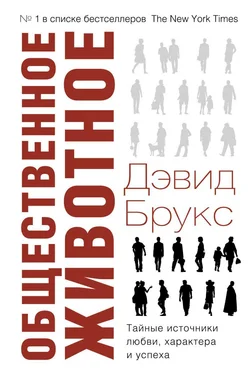Gopnik, Meltzoff, and Kuhl, 185.
Bruce E. Wexler, Brain and Culture: Neurobiology, Ideology, and Social Change (Cambridge, MA: MIT Press, 2006), 23.
James Le Fanu, Why Us?: How Science Rediscovered the Mystery of Ourselves (New York: Pantheon Books, 2009), 54.
Schwartz and Begley, 214-15.
Gilles Fauconnier and Mark Turner, The Way We Think: Conceptual Blending and the Mind’s Hidden Complexities (New York: Basic Books, 2002), 12.
Fauconnier and Turner, 44.
Jerome Bruner, Actual Minds, Possible Worlds (Cambridge, MA: Harvard University Press, 1986).
Dan P. McAdams, The Stories We Live By: Personal Myths and the Making of the Self (New York: Guilford Press, 1993), 48.
Claudia Wells, «The Myth About Homework,» Time, August 29, 2006.
Ann В. Barnet and Richard J. Barnet, The Youngest Minds: Parenting and Genetic Inheritance in the Development of Intellect and Emotion (New York: Touchstone, 1998), 197.
Louis Cozolino, The Neuroscience of Human Relationships: Attachment and the Developing Social Brain (New York: W W. Norton & Co., Inc., 2006), 139.
L. Alan Sroufe, Byron Egeland, Elizabeth A. Carlson, and W. Andrew Collins, The Development of the Person: The Minnesota Study of Risk and Adaptation from Birth to Adulthood (New York: Guilford Press, 2005), 59-60.
Barnet and Barnet, 130.
Sroufe et al, 133-34.
Sroufe et al., 154.
Sroufe et al., 60.
Sroufe et al., 138.
Daniel J. Siegel, The Developing Mind: How Relationships and the Brain Interact to Shape Who We Are (New York: Guilford Press, 1999), 94.
Kayt Sukel, «Brain Responds Quickly to Faces», BrainWork, Dana Foundation Newsletter, November 1, 2008.
George Vaillant, Agwg Well: Surprising Guideposts to a Happier Life from the Landmark Harvard Study of Adult Development (New York: Little, Brown & Co., 2002), 99.
Ayala Malakh Pines, Falling in Love: Why We Choose the Lovers We Choose (New York: Routledge, 2005), 110.
Cozolino, 230.
Alison Gopnik, The Philosophical Baby: What Children's Minds Tell Us About Truth, Love, and the Meaning of Life (New York: Farrar, Straus & Giroux, 2009), 184.
Susan D. Calkins, «Early Attachment Processes and the Development of Emotional Self-Regulation,» in Handbook of Self-Regulation: Research, Theory, and Applications, eds. Roy F. Baumeister and Kathleen D. Vohs (New York: Guilford Press, 2004), 332.
David М. Buss, The Evolution of Desire: Strategies of Human Mating (New York: Basic Books, 2003), 93.
Mary Main. Erik Hesse, and Nancy Kaplan, «Predictability of Attachment Behavior and Representational Processes at 1, 6, and 19 Years of Age: The Berkeley Longitudinal Study,» in Attachment from Infancy to Adulthood: The Major Longitudinal Studies, eds. Klaus E. Grossmann, Karin Grossmann, and Everett Waters (New York: Guilford Press, 2005), 280.
Thomas Lewis, Fari Amini, and Richard Lannon, A General Theory of Love (New York: Vintage, 2001), 199.
Kathleen Kendall-Tackett, Linda Meyer Williams, and David Finkelhor, «Impact of Sexual Abuse on Children: A Review and Synthesis of Recent Empirical Studies,» in Psychological Bulletin, 113, no. 1 (1993): 173.
Gopnik, 182.
Sroufe et al., 268.
Sroufe et al., 164.
Sroufe et al., 167.
Sroufe et al., 210.
Sroufe et al., 211.
Sroufe et al., 95.
Sroufe et al., 287.
Muzafer Sherif et al. The Robbers Cave Experiment: Intergroup Conflict and Cooperation (Middletown, CT: Wesleyan University Press, 1988).
Baumeister, 286-87.
Gordon В. Moskowitz. Social Cognition: Understanding Self and Others (New York: Guilford Press, 2005), 78.
Ayala Malach Pines, Falling in Love: Why We Choose the Lovers We Choose (New York: Routledge, 2005), 93.
Frank Portman. King Dork (New York: Delacorte Press, 2006), 123.
Steven W. Anderson et al., «Impairment of Social and Moral Behavior Related to Early Damage in Human Prefrontal Cortex,» in Social Neuroscience: Key Readings in Social Psychology, eds. John T. Cacioppo and Gary G. Berntson (New York: Psychology Press, 2005), 29.
Anderson et al., 34.
John D. Bransford, Ann L. Brown, and Rodney R. Cocking, eds. How People Learn: Brain. Mind, Experience, and School (Washington, DC: National Academies Press), 119.
Brizendine, 34.
Louann Brizendine, The Female Brain (New York: Broadway Books, 2006), 33.
John Medina, Brain Rules: 12 Principles for Surviving and Thriving at Work, Home, and School (Seattle, WA: Pear Press, 2008), 110.
Fish Is Fish, Bransford, Brown, and Cocking, eds., 11.
Brizendine, 45.
Peter Carruthers, «An Architecture for Dual Reasoning,» in In Two Minds: Dual Processes and Beyond, eds. Jonathan Evans and Keith Frankish (Cambridge: Oxford University Press, 2009), 121.
The Greek Way (New York: W. W. Norton & Co., Inc., 1993), 156.
Daniel Coyle, The Talent Code: Greatness Isn't Born. It's Grown. Here's How (New York: Bantam Books, 2009), 175.
Bransford, Brown, and Cocking, eds., 97.
Carol S. Dweck «The Secret to Raising Smart Kids,« in Scientific American Mind, December 2007.
David G. Myers, Intuition: Its Powers and Perils (New Haven, CT: Yale University Press, 2004), 17.
Richard Ogle, Smart World: Breakthrough Creativity and the New Science of Ideas (Boston, MA: Harvard Business School Press, 2007).
Geoff Colvin, Talent Is Overrated: What Really Separates World-Class Performers from Everybody Else (New York: Portfolio, 2008), 46-47.
Colvin, 44.
Colvin, 46-47.
Читать дальше












